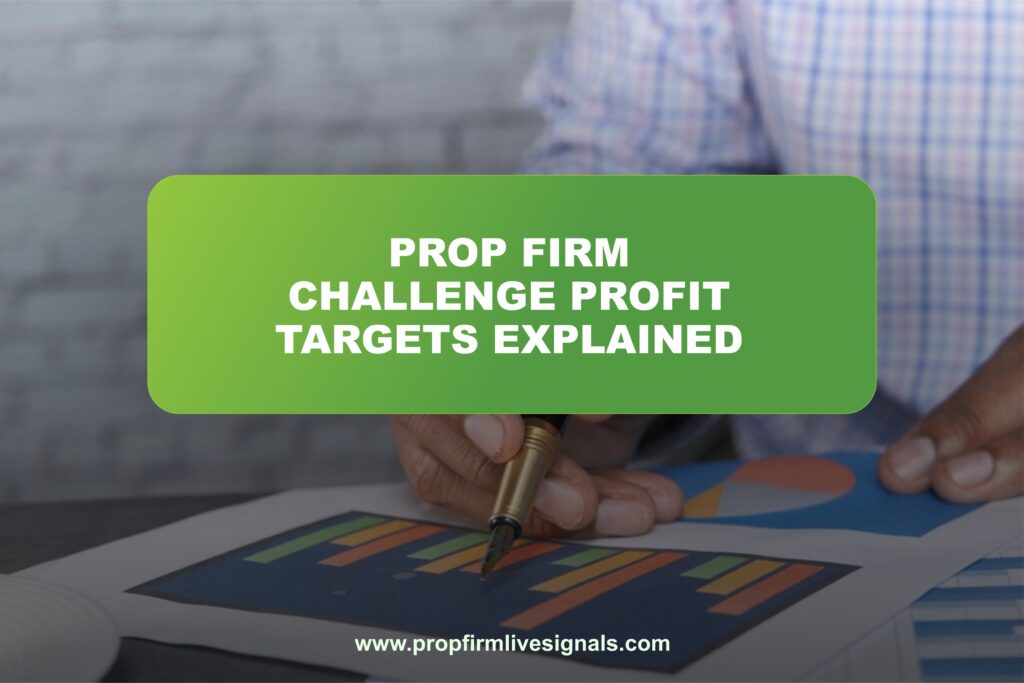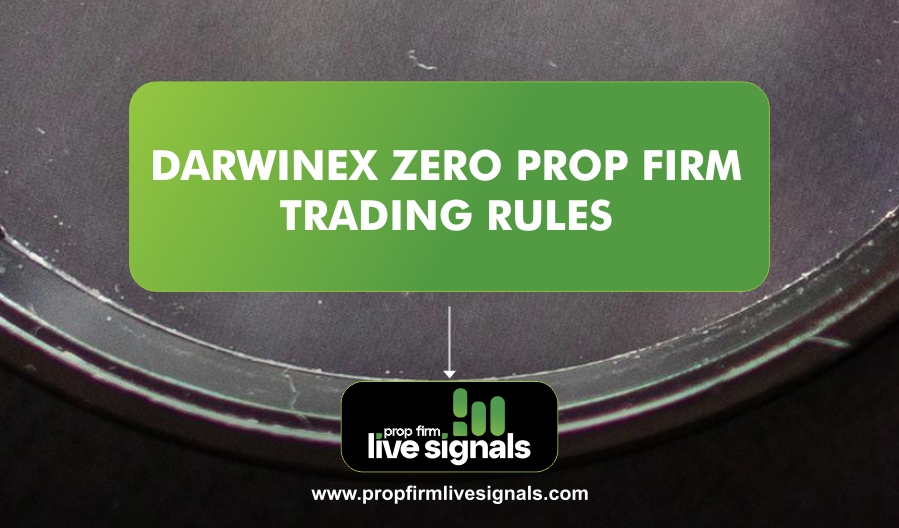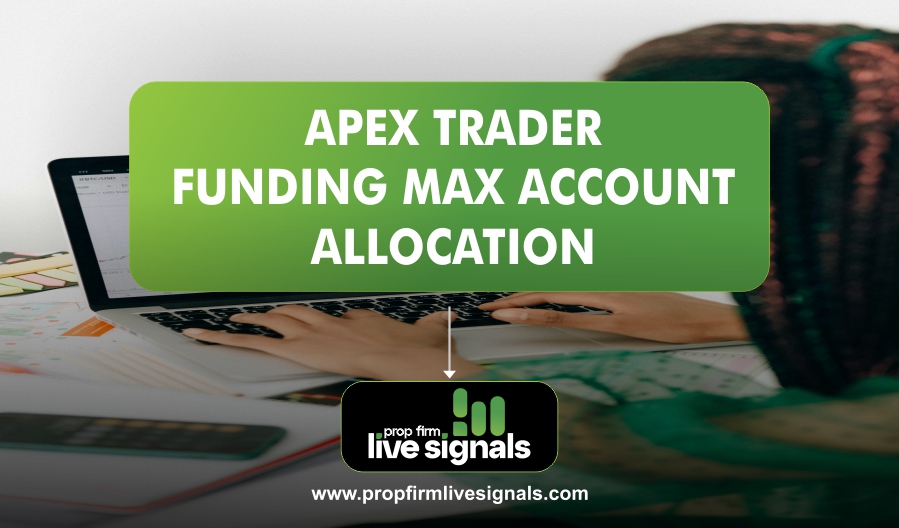Via these firms, traders can attain access to substantial amounts of trading capital in return for showing their trading skills through structured challenges.
At the core of this challenge lies the profit target: a benchmark for traders to prove consistency and risk management skills.
This article discusses the details of prop firm challenge profit targets, the review process, and the benefits and risks associated with this unique environment for trading.
What is a Prop Firm Profit Target?
The prop firm challenge profit targets refers to the predefined, achieved percentage or monetary gain that a trader has to attain in prop firm challenges within a certain time. These targets act like milestones, showing proof that one can sustain profit-making with adherence to the risk management parameters of the firm. Example:
- A firm could require the trader to achieve an 8% profit target in 30 days during the first phase of the evaluation.
- That target could be reduced to 5% in the second phase, offering a more relaxed environment but still testing consistency.
Types of Profit Targets
Below are the types of Prop firm challenge profit targets;
1. Percentage-Based Targets
Many proprietary trading firms have profit targets set as a percentage of the trader’s starting account balance. If a trader is working with a $25,000 account and the profit target is set to 10%, then that trader has to make $2,500 in profits within the review period.
These percentage targets ensure traders prove to be consistently profitable in relation to the account size, with the focus underlining risk-adjusted returns more so than absolute figures of profit.
2. Fixed Dollar Amounts
Some prop firms put fixed dollar profit targets. For example, a trader may be required to make $2,000 in profits, irrespective of the starting capital.
This is a simple approach and will also appeal to traders who prefer to deal with straightforward, fixed targets. However, fixed dollar targets can require higher returns on smaller accounts, which may raise the level of challenge in trading.
3. Time Constraints
Profit targets are often paired with time constraints to test a trader’s ability to achieve results efficiently. Traders typically have a defined period such as 30 days, 60 days, or a few weeks to reach their targets.
These constraints encourage disciplined and strategic trading while simulating the pressure of real-world market conditions. However, they can also add stress, particularly if market conditions are unfavorable during the evaluation period.
4. Scaling Targets for Larger Accounts
As account sizes increase, so do the profit targets. Using the same example above, if the account size was $100,000 and the target was 10%, one would need to make $10,000.
This means larger accounts have larger absolute profits, but the same percentage is needed because it ensures that traders of all account sizes are on an even playing field.
5. Daily Profit Targets
Some companies use a daily profit target or daily cap to prevent traders from depending on one trade to make their targets.
These kinds of daily targets help keep the performance consistent and control excessive risk-taking. For instance, a trader could be required to achieve a 1% daily target as part of the overall evaluation process.
6. Rules and Targets of Drawdown
It’s very common to balance out profit targets with drawdown limits when evaluating a trader’s skills in terms of risk management.
A trader might aim at getting 10% profit but have, say, a maximum drawdown limit of 5%. In such cases, the dual requirement proves both profitability and risk management skills, an important factor in long-term trading.
7. Realistic Market Conditions
Many firms require that traders achieve their profit targets under realistic market conditions. For example, targets should be met without leveraging too much or trading during highly volatile and unpredictable periods.
This is to ensure that traders demonstrate replicable skills in real accounts and not just during evaluations.
Benefits of Participating in Prop Firm Challenges
1. Access to Capital
Among the major benefits accruing from one’s participation in prop firm challenges is enormous trading capital with no personal risk. This will enable them to go for larger positions, which is not always possible with their own trading capital.
2. Less Financial Risk
In turn, this evaluation stage with traded fake money minimizes financial risk by honing skills and perfecting strategies of traders. This is invaluable experience with no personal financial loss pressures.
3. Professional Development
Engaging in prop firm challenges enables a trader to learn professional disciplines and develop an aptitude for risk management. It allows strict adherence to the rules and builds the professional approach necessary to become an accomplished trader in his later years.
4. Performance-Based Rewards
Most successful participants receive performance-based compensation structures where incentives are directly related to trading performance. In most cases, the more profitable a trader becomes, the higher they will earn.
Challenges Presented to the Traders
1. High Expectations
While offering very lucrative opportunities, prop firm challenges have high expectations from their traders.
The traders must be consistent in making profits while keeping their risk within the limits, which is very demanding and requires lots of skills and discipline.
2. Evaluation Fees
Some prop firms charge for entering the challenges, which can be scaled up or down depending on how much capital is in play.
Those who don’t succeed with their requirements will thus lose that initial investment with no return.
3. Emotional Pressure
The stress to perform within a very strict timeline often leads to emotional pressure for many traders.
This may influence a trader’s judgment and make him enter into trades impulsively without considering well thought out strategies.
Want to take your trading to the next level?
Take advantage of our LiveSignals, your go to resource for dependable, real-time trading signals, you can eliminate uncertainty from trading.
Propfirmlivesignals is the answer to your constant success in the markets!
You will always be on top of your game with expert analysis and real-time updates. Never let this chance slip away to supercharge your trading journey.
More Info Click here.
Frequently Asked Questions (FAQs)
What if I fail to meet the profit target?
- The inability to meet profit targets within the period set as a basis for evaluation can render one unqualified in receiving a funded account; traders might have a chance depending on the policies of every firm, by paying applicable fees, to retry another challenge.
Are there any fees when joining prop firm challenges?
- Yes, many prop firms charge fees for joining their challenges; these may vary depending on the amount of capital at risk and the firm’s terms. For traders who fail to fulfill such requirements, this initial investment might be lost.
What are the risk management rules I have to observe during the challenge?
The risk management rules differ by each firm, but generally would include:
- Maximum Daily Loss: The maximum amount one can lose in one day, often between 4-5% of the beginning balance.
- Aggregate Drawdown Limits: Restrictions on the overall amount of money lost during the testing period.
- Position Sizing: An indication of the amount of capital one should risk on any one given trade.
Can I trade any asset class during the challenge?
- Most prop firms offer a variety of asset classes for traders to work with, including stocks, forex, commodities, and cryptocurrencies. However, depending on the policy of a certain firm, specific trading instruments may not be allowed.
How long does an average prop firm challenge take?
- The duration of a prop firm challenge can vary greatly depending on the firm’s structure. Challenges range from two weeks to a few months. Traders should check specific firm guidelines for timeframes.
What are the vital skills necessary to pass the prop firm challenge?
Primary skills required to pass a prop firm challenge:
- Strong Technical and Fundamental Analysis skills
- Effectively managing risk
- Discipline-Emotional Control under Stress.
- The ability to create and follow a trading plan.
What happens after I pass the challenge?
- After you pass your challenge, you will most of the time be provided with a funded trading account, whereby you can trade with actual capital. The profit-sharing is usually determined by the company’s policies, and quite often, traders get the lion’s share of the profits while the firm shares part of it.
Can I trade with my own strategies during the challenge?
- Yes, most prop firms allow traders to use their own strategies during the evaluation process, provided they follow the firm’s rules on risk management and trading behavior.




